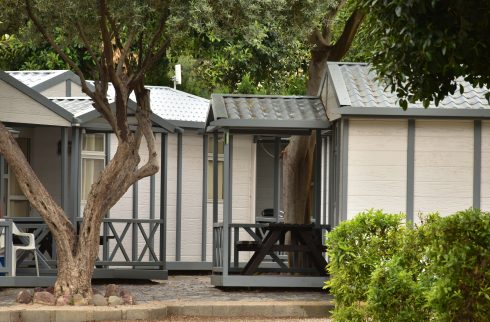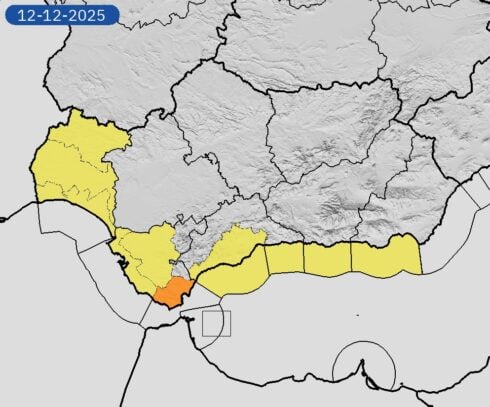MALAGA’S golden coastline stretches 150 km from the border with Cadiz in the west to the coves beyond Nerja in the east, with Torremolinos and the city of Malaga roughly in the middle.
So, before you book a hotel, or put your bucket and spade and kids in the car, check our guide and make a plan. More than 4.5 million people headed to the Costa del Sol last year and searched for a good spot on a good beach. The ones in the know went to these:
Playa del Cristo, Estepona

A suburban dark sand beach, Cristo is gently sloping with safe, shallow water making it ideal for families with young children. As a bonus, the beach is concave and the most sheltered bay on the coast.
Located on the western edge of town past the marina, you get buildings in the background, but also beautiful views west (towards the Rock of Gibraltar), and spectacular sunsets.
Relatively quiet during the weekdays (outside July and August), its chiringuitos attract young crowds and older local expats during evenings and weekends. The beach has showers, toilets, and a lifeguard (in summer).
Getting there: From the N340 take the exit at KM 155. From central Estepona, go west on Avenida España and Avenida del Carmen.
Playa Alicate / Costabella / Pinomar, Marbella

This continuous stretch of straight beach is accessed through upmarket villa urbanizaciones 15 minutes east of Marbella. It’s hard to know where one stops and the next begins, but it doesn’t matter as they are all wide and made of deep, pale sand. Sometimes windy enough for kitesurfing, most people come here to relax, and eat and drink well.
Bars and restaurants are tucked in low dunes at 100-metre intervals, their shaded loungers splayed out in front. From west, the best include Los Sardinales for paella; South Beach with bed-sized loungers and SUPs free for clients’ use; and upmarket Bono Beach with sail-shaded terrace. At the east end, there’s Ranchon Cubano (good for live music), plus jet ski and watersport rides and rentals on offer nearby. Other services include showers, toilets, lifeguards and a massage tent.
Getting there: From N-340, cut through urbanisations anywhere between KM 189 & 192 (from Los Monteros to Las Chapas)
Playa de las Cañas, Marbella

Also accessed through urbanizaciones, this beach near Cabopino Marina, is famous for the well-preserved squat lookout tower, Torre de Lance de las Cañas. A 1 km, non-glitzy, narrow strip of beach, it is backed by a low cliff covered in lush succulents, broken up by pockets of sand between rocky outcrops, and has a more natural feel than most.
It’s not a virgin beach – lucky people’s villas and gardens with palm trees are just visible, and there’s a family-run traditional restaurant, Triana Bar, located by the parking area. But it’s miles away (in spirit if not map inches) from the swank of Playa Las Chapas, home to Nikki Beach and Orange Beach Club. immediately to the west.
Getting there: From the A-7, take the Avenida Andalucia exit.
Playa de Artola /Cabopino, Marbella

Located 14 km east of Marbella, this, again, is a beach with a wild feel and family-friendly facilities.
It’s a lovely, wide expanse of pale sand, of over a kilometre, with a gay-friendly nudist area in dunes to the west (just so you know!), and Cabopino Marina (the place for boat trips and restaurants) to the east.
The beach runs along the Artola Dunes nature reserve, an area of pines and junipers and tufty vegetation, criss-crossed by trails and boardwalks, with an interesting watch tower, Torre Ladrones.
Andy’s Beach Bar is the top destination for visitors, offering inexpensive burgers, fish, cocktails, constant music (often live), a megalopolis of loungers, welcome shade, toilets, and SUPs for rent. Pedalos and jet skis are available along the beach in high summer.
Getting there: Off N-340, look for signs for Cabopino (also called Playa de las Duna-Carib); turn right before the Marina. Parking available in dunes and close to Andy’s (but can be packed).
Playa de Bil-Bil, Benalmádena

This is your traditional town centre beach, tucked below the balustrades of the busy Paseo Maritimo, and lined with seaside kiosks selling ice creams and buckets & spades, with almost nothing but bars and cafes across the road.
The beach is named for the attractive Arab-style castle built as a private home in 1927, that stands among palms at one end.
Just 400m long, but 60m wide with dark sand, calm sea, this an ideal and easy choice for families with small children. Do not hope for space and tranquility – it is packed at weekends, but Bil-Bil offers everything else, including loungers, umbrellas, showers and toilets, as well as boat trips from nearby Puerto de Benalmádena.
Getting there: Take the N-340: it’s 22 km west of Malaga, 7.5 km west of Torremolinos; parking available nearby in Av Federico Garcia Lorca.
Playa de la Carihuela, Torremolinos

Torremolinos has its devoted fans, however its reputation as an early package tourism destination tends to put other new visitors off. As an urban resort with an unbeatable selection of attractions and amenities (and parking options), it’s got a lot to offer.
Try this seaside playground of vast proportions, located 4.5 km west of Torremolinos proper, backed by attractive pedestrian Paseo Maritimo with hundreds of small bars, restaurants, and shops selling beach paraphernalia.
The wide, 2 km soft sand beach, is sub-divided into distinct playas (Playa Pilar, Tucan Beach, Playa Manolo and so on) each with blocks of loungers and umbrellas, screened by windbreakers.
The whole place is tidy and well-maintained with palm-shaded lawns, flowerbeds and plenty of open space that includes children’s play areas and a volleyball zone. There’s plenty of aqua fun available from banana boats to jet skiing, and showers, toilets, and lifeguards positioned at regular intervals.
The nice family-friendly atmosphere attracts a mix of Spanish and foreign visitors.
Getting there: Playa de la Carihuela is 19.5 km west of Malaga, and signposted off N-340. Car parks are located one and two blocks from the seafront.
Playa de la Malagueta, Malaga

Malaga city’s most famous urban beach is located, east from Malaga’s old town, just beyond the commercial port. A wide, man-made beach with soft, greyish sand, it is backed by the lofty palms and high-rise, classy apartments of the Pablo Ruiz Picasso seaside promenade, and has views of distant, lilac mountain peaks one way and industrial cranes the other.
You’ll find healthy looking joggers and all-season swimmers; kids’ play zones; shaded, grassy areas and loungers and umbrellas for rent; as well as showers, toilets, lifeguards.
Malagueta is popular with chic Malaga families – though don’t feel you have to dress up! – and has a clutch of elegant restaurants at the lighthouse end, including Chiringuito la Farola and Merendero Antonio Martin.
Getting there: If driving, head out on the N-340; or walk the 15 minutes from the old town (alternatively rent a bike and drop it off at the Malaga Bici stand). Parking is tricky.
Playa Burriana, Nerja

Nerja offers the spectrum of urban beaches from action-packed Playazo to tiny, central coves like el Salon, but this 800-metre sandy option is a local favourite.
Backed by low cliffs covered in fig trees and stands of prickly pears, topped by picturesque white buildings and views of rugged purple mountains beyond, it basically has everything. Rows of loungers are set out in front of the main chiringuitos, and, as well as a kids’ playground and volleyball zone, banana boats, SUPs and pedalos are available in high season, along with parasailing, jet skis, diving, and kayak tours to the coves at Maro.
Getting there: From the centre of Nerja, take the steep Calle Filipinas (‘Cardiac Hill’). If you’re a guest of the parador, you can use their lift to Camino de Burriano.
Maro Beach, Nerja

One of several rocky coves carved out of the high cliffs in the rugged coastline bordering Granada province, Maro is 6 km east of Nerja and makes a good, wilder alternative.
Set in the protected Acantilados de Maro nature reserve, it is accessed via a steep lane down through pine trees offering exhilarating sea views on the way. At the bottom you’ll find a small beach, made up of sand and shingle and (normally) calm, clear water that’s popular with snorkelers and divers. Maro has the feel of a secret find, but it’s not devoid of people – or services and facilities which, in high season, include a lifeguard, loungers, shade, toilets, kayak tours to neighbouring coves and waterfalls, and a no frills chiringuito, Los Alcantilados, selling cold drinks and fresh fish on a shaded terrace.
Popular with cool, young, Spanish crowd.
Getting there: Clearly signposted off the N-340 from Nerja. From Málaga, A-7 exit 295. Parking along beach road.
Las Calas Torre del Pino, Nerja

An unusually rugged and natural option in the reserve, 2.5 km further east, the beach lies at the base of 180-metre cliffs and you’ll need to climb down sandy stony paths through pines and sizzling scrubland to reach it.
While officially two coves, there’s actually one small beach divided by fallen rocks (behind which you often find nudists). The sand is coarse and pebbly, but the upside is good visibility for exploring underwater rock formations and spotting fish.
There are no facilities so bring something for shade, as well as sunblock, drinks and snorkels. The challenging access means it is seldom crowded.
Getting there: Take the N-340 until KM 299. Parking near the watchtower, Torre del Pino.
READ MORE
Malaga kicks off beach season with no beach shower restrictions
Two beaches in Malaga among the Top 20 most-Instagrammed in Europe
Click here to read more Olive Press Travel News from The Olive Press.








